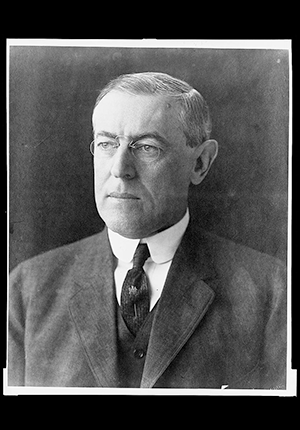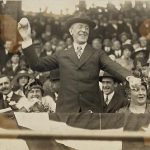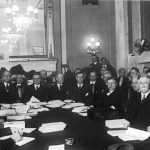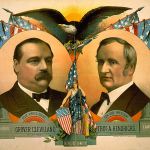
Woodrow Wilson, president during the transition from the Progressive era to the roaring twenties, wrote a book outlining goals for his presidency by the name of The New Freedom. He exemplified many of the progressive ideals of the time such as wanting to regulate businesses and break up monopolies, a trend seen from the prior Roosevelt and Taft administrations.
On the topic of breaking up businesses, Wilson begins with a discussion of the changing reality of America through the lens of economics and how corporations have became an integral part of the country (The New Freedom). This blends well with the time period as it showcases popular opinion. Wilson moves into a discussion of the powers of corporations over the government by discussing the “control of the government exercised by Big Business” (The New Freedom). He discusses how the government has grown to support “favoritism” through tariffs which break the “spirit of American enterprise” (The New Freedom). This is indicative of one of Wilson’s major goals, which is the reduction of the tariff and the opening up of the economy in order to support free enterprise. This also shows the increased role Wilson wants to take in the world as reducing tariffs could lead to more trade with other countries. This connects with prior administrations starting with Roosevelt who began stepping away from isolationism and taking a firmer stance in the world.
Later in the piece, Wilson changes tone as he begins to discuss the idea of radical change by discussing the constitution (The New Freedom). He discusses how the government is a “living thing” that must adapt with the people (The New Freedom). This perfectly encapsulates what progressives during the time were thinking. They saw a system which needed reform and strived to fix the country in their own ways throughout the time period.
In all, Wilson’s The New Freedom served as a basis for the progressive policies that he was planning on supporting during his presidency. It is interesting as it not only shows agreement with the thinking of progressives during the time, but also shows some continuity with prior presidents during the progressive movement as well.






